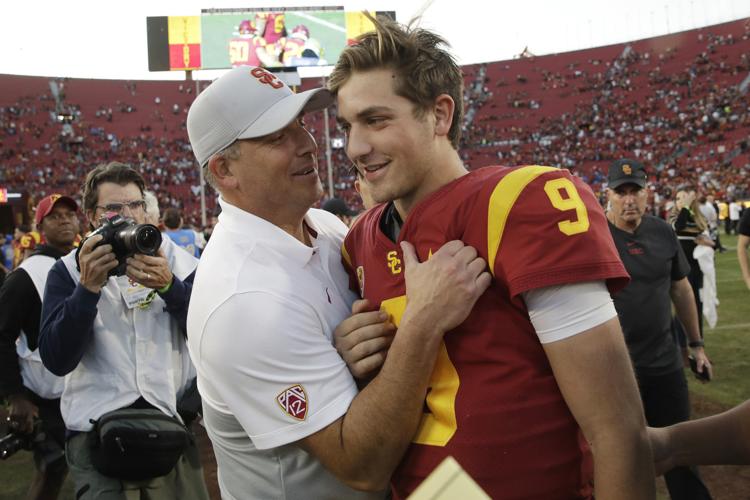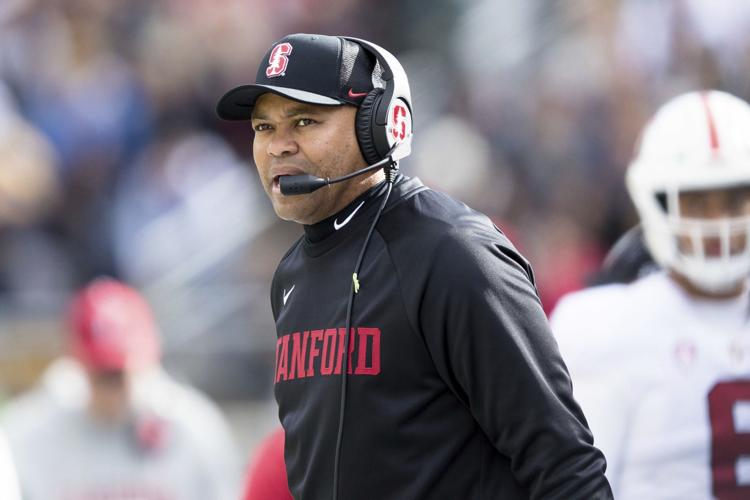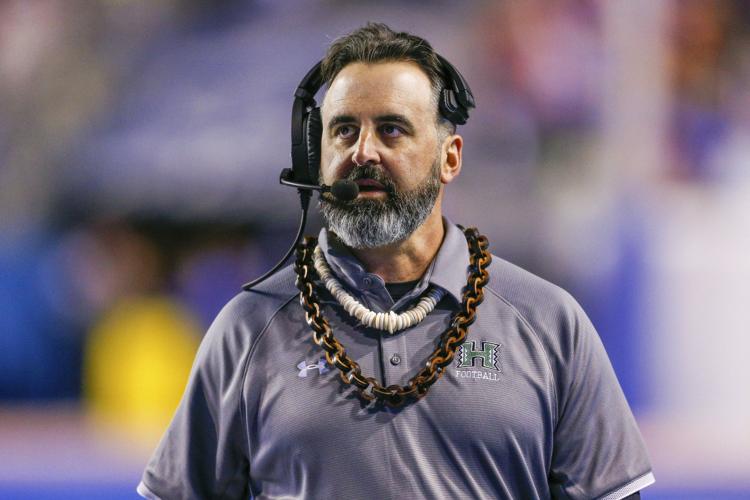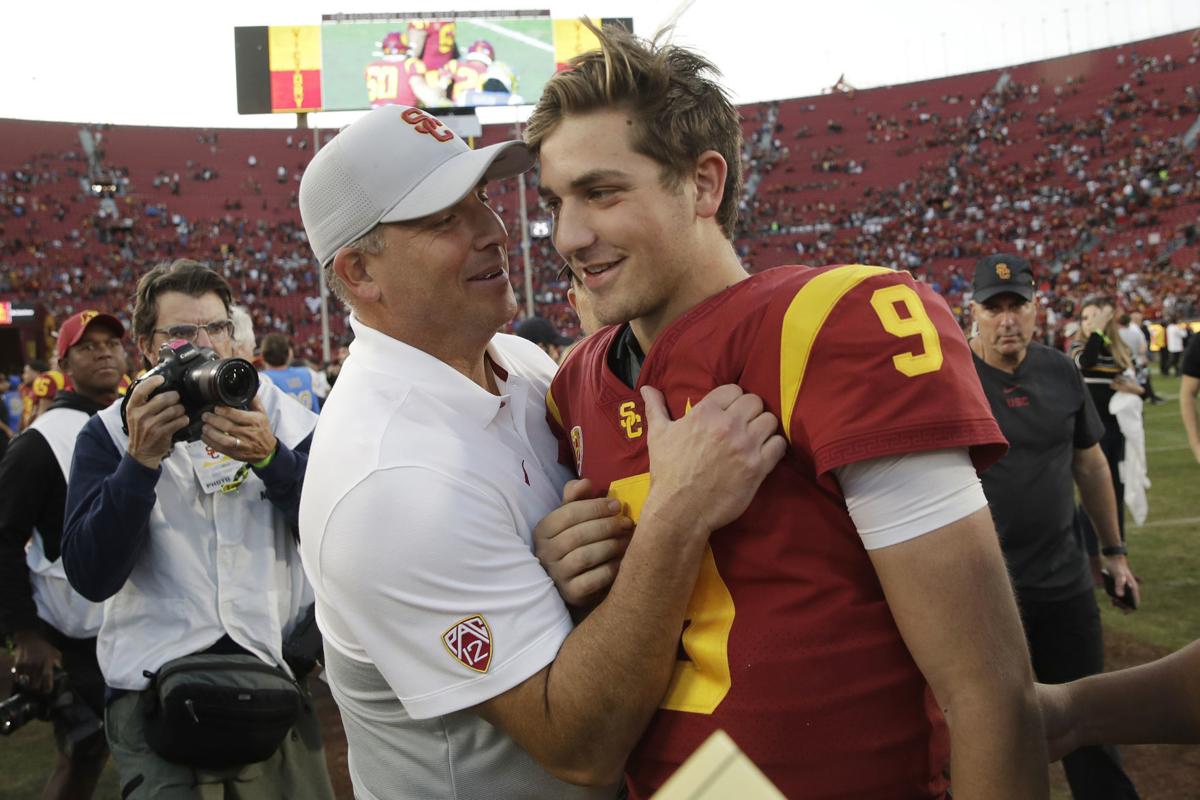Football coaches from the Pac-12 Conference are participating in a series of webinars with the media this week. Any number of topics are bound to come up. But one was foremost on everyone’s mind during the first session Monday afternoon:
What’s the viability of the 2020 college football season amid the coronavirus pandemic?
Although they’re the highest-paid and highest-profile figures in collegiate sports, coaches are pretty far down the decision-making chain of command when it comes to such serious matters.
But if/when the time comes to bring teams together to begin preparing for a season, those coaches will have to be armed with knowledge and ready for any and all contingencies. So their insights and opinions matter.
Three coaches shared their thoughts in the first of four scheduled webinars: Stanford’s David Shaw, USC’s Clay Helton and Washington State’s Nick Rolovich. Pac-12 Networks analyst Yogi Roth and members of the press shared the interviewing duties.
Echoing the sentiment offered by Pac-12 commissioner Larry Scott to the Star last week, the coaches expressed optimism that the season will happen in some form or fashion. “As coaches,” Helton said, “I think we’re half-glass-full people.”
But they also acknowledged the myriad unknowns in what Shaw described as “the definition of a fluid situation.”
Below is a portion of Monday’s conversation, which has been lightly edited for context and clarity.
Topic: Kimberly Harmon, Washington’s team doctor, spoke to all the coaches during last week’s virtual league meeting about testing and protocols when squads get back together.
Helton: “The one thing that I was very appreciated of is how much care and concern, foremost, is going into the student-athletes and the staff members. When we do get the opportunity to report back, that the No. 1 priority is the health and the safety of those that are involved.
The Star's Alec White interviews Adia Barnes and Salvo Coppa from Arizona women's basketball on the death of Kobe Bryant. Barnes first met Bryant in 1999 and Coppa knew Kobe's father from coaching overseas.
“From testing, to being able to have secure environments, to being able to meet, to practice … it was just an unbelievable wealth of knowledge that was being thrown at us. It also shows you how grand a scope and how big a project this is going to be as we get back into that safe environment. I walked away from it going, ‘Wow, there are some brilliant people that are really diving into this, that are formulating a plan.’ ”
Topic: Different scenarios that coaches, athletic directors and others are discussing regarding the 2020 season.
Shaw: “What is the safest way to go about doing what we want to do? We have to have processes that are vetted by our medical professionals, and then we have to have contingency plans. So we start with what makes the most sense.

FILE - In this Dec. 1, 2018, file photo, Stanford coach David Shaw watches during the team's NCAA college football game against California in Berkeley, Calif. The Pac-12 has discussed the possibility of moving to an 11-game, all-conference schedule this year amid the unprecedented uncertainty of the coronavirus pandemic, Southern California's Clay Helton says. Shaw also says he doesn't necessarily agree with NCAA President Mark Emmert's belief that college campuses should be open for college sports to resume. (AP Photo/John Hefti, File)
“If you have a completely open campus, that’s one thing. If you have a partially open campus, what can you do with your student-athletes? How can we get them back in the weight room? What’s the process of bringing people back together? What’s the quarantine look like? What does the testing look like? Many of us believe that the testing is going to be different two months from now than it is now.
“Rapid diagnostic testing is something that’s got to be vital to us reincorporating people back into one small area. If someone does test positive, we’ve gotta find out quickly and isolate very quickly. So those things have to be in place before we can go to Step 2.
“But at the same time, we have to talk about Step 1, Step 2, Step 3, Step 4, in order, to be ready. And if something does happen, we have to have talked about it, met about it, talked to professionals about it and have a process in place.”
Topic: The possibility that California, which has been following strict shelter-in-place measures, might not be on the same timeline as other states. Four Pac-12 schools reside in California.
Shaw: “Although our governor (Gavin Newsom) has been probably one of the most outspoken and aggressive governors in the nation, he’s also been in great communication with other states, Oregon and Washington in particular, trying to trade ideas and talk about different things. Hopefully, there are some regional things that do happen as we get closer to the start of football to where most of our states, if not all of our states on the West Coast, can kind of be on a similar timeline. But at the very least it’s comforting to know that they’ve been in communication.”
Topic: The possibility of playing an 11-game, conference-only schedule this season.
Helton: “Yes, it’s been discussed in our Pac 12 meetings, and it’s been discussed by the commissioners. That is one of the structures under discussion, depending on where we are at 6-8 weeks from now.”
Topic: The idea of playing in empty stadiums and the notion that if it isn’t safe for fans, how could it be for players and staff?
Rolovich: “I think, in general, if we feel it’s safe enough to play, then I’d like to play. I know that the fans are part of the experience; they’re also part of the financial model. But that’s not in my job description. We’re just trying to hopefully get some games in this fall.”

FILE - In this Saturday, Oct. 12, 2019, file photo, Hawaii head coach Nick Rolovich walks the sideline during the second half of an NCAA college football game against Boise State, in Boise, Idaho. Nick Rolovich dived right in when Washington State hired him in January. Just when it seemed like things were up and rolling, the COVID-19 pandemic hit. The national shutdown hurt coaches across college football as they prepare for the 2020-21 season, but it was particularly difficult on programs with first-year coaches trying to build something new from the ground up. (AP Photo/Steve Conner, File)
Helton: “I think when we’re given the opportunity, whenever that time is, I think all of us as coaches, players, we’re going to be grateful. Don’t know the start date, don’t know the structure, don’t know if it’s gonna have fans or not.
“The grand day of celebration is when we’re all back together. Part of college football is the passion of the fans. We love that.”
Topic: The biggest concerns the coaches have when the all-clear signal is given.
Rolovich: “Making sure that we give them enough time to get physically ready for a season. … The positive of this (is that) these guys don’t get a lot of time away from the building with their family. We were going to try to find a way to get them a few more weeks; they got a little bit more than we talked about. But I think it’s given them a good opportunity to reset, see why they’re really doing it.”
Shaw: “Making sure, before we even get there, that our guys have the same community feeling that they had when they left. I’m talking to psychologists and a lot of different people. This has been a tough time for a lot of guys. We’re glad they’re with their families, but they miss their guys. They miss that camaraderie. Make sure they know that we care about them, that they’re a big part of us and we’re a big part of them.”
Topic: The extent to which decision-makers have discussed the postseason structure if the regular season is compromised.
Shaw: “Well, that’s a big question isn’t it? Depending on what the schedule looks like, depending on how many people you’re playing, depending on who you’re playing … if we go to a conference-only schedule, how do you compare conference to conference? Do we expand the playoff because we’re not really going to know how to whittle this thing down to four?”
“If we’re able to play 12 games, somehow, someway, great, it’ll work its way out. … Many of us believe it’s not going to be 12 and it may not even start on time, so those other factors are going to affect however the bowl season looks, as well as the playoff.”
Helton: “It’s all dictated on the structure of the regular season, whether it’s 12 games or abbreviated.”
Rolovich: “In my mind, I’m planning on playing Utah State Game 1. I’m optimistic about going with the 12 we got till they tell me differently.”







